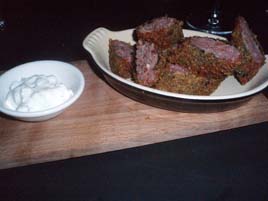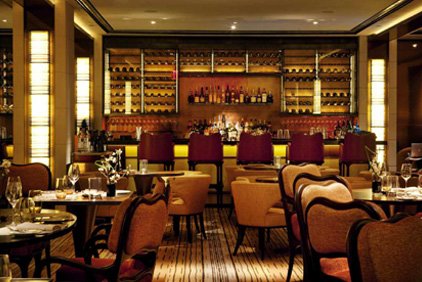Tanuki Tavern
 Monday, April 19, 2010 at 08:17PM
Monday, April 19, 2010 at 08:17PM 
Note: Tanuki Tavern closed in May 2012. It will be replaced by Toy, a new concept and menu from the same owner, Jeffrey Chodorow. The countdown on its eventual closure begins in 5, 4, 3, 2,….
*
When maestro of mediocrity Jeffrey Chodorow replaced his Meatpacking District Japanese restaurant Ono with Tanuki Tavern, I did not rush to dine there. His restaurants are never great, and often suck. Nobody in this town has had so many restaurants spectacularly flame out. How is he still in business?
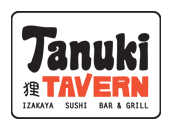 Coverage on Eater.com made Tanuki Tavern sound more like a gimmick than a serious restaurant. When I learned that the menu would have 70 items, I was not impressed. In the Times, Sam Sifton awarded one star, which is one more than I figured it would get.
Coverage on Eater.com made Tanuki Tavern sound more like a gimmick than a serious restaurant. When I learned that the menu would have 70 items, I was not impressed. In the Times, Sam Sifton awarded one star, which is one more than I figured it would get.
The excuse to try Tanuki Tavern came last weekend, when my son was in town and my original dining plans fell through. Much to my surprise, Tanuki Tavern is decent. Actually, it is not bad.
That epic-length menu is mostly Japanese, hedging itself as only Chodorow can, with nine categories, and interlopers like a Pat LaFreida burger and a Creekstone Farms bone-in steak. Many dishes are cross-overs not found on most Japanese menus, like Tuna Sliders and Spicy French Fries.
Aside from the steak ($58), nothing is very expensive. Three appetizers (“snacks” in Chod-speak) and a plate of rolls were $67. It was hard to tell how much food to order, which is surely what the Chod-meister wants, as you are encouraged to spend in excess; fortunately, it was exactly the right amount.
There are no great discoveries here (you knew that, right?), but everything was enjoyable.
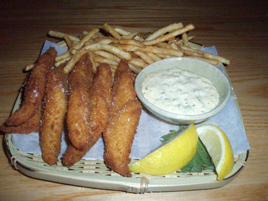

Fish & Chips ($9; above left) were exactly what you’d expect. Flecks of yuzu in the tartar sauce were the only connection to the restaurant’s Japanese theme. We loved the Tori Dongo ($7; above right), three chicken meatballs in rice crust with spicy ponzu.
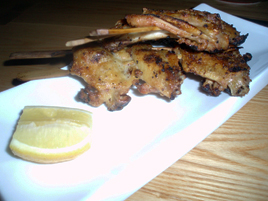

If you grill chicken wings with citrus salt, the result is Tebayaki ($9; above left), and it was very good indeed. The four half-rolls we tried (above right), ranging from $7 to $14 apiece, were on the level of any decent neighborhood sushi place.
Chodorow did a nice job with the rehab, making Tanuki Tavern seem a lot less cavernous and corporate than Ono. Actually, you don’t feel like you’re in the Meatpacking District, which is an accomplishment.
The sushi chefs are Japanese, but none of the servers are. The restaurant is not full, and yet, when you need them they aren’t around. Plates that clearly call for silverware are initially served without any. An empty glass goes unnoticed. When you do get the servers’ attention, they are friendly and efficient. And at least you never want for paper napkins, which are rolled up and kept in a mug by the side of the table.
One wonders how long it will be before Tanuki Tavern joins the Chodorow restaurant cemetery. On a Saturday evening at 7:30 p.m., just a few tables were occupied. It was about half full when we left, and clearly not setting the world afire. There was an unusual abundance of all-girl parties and families with children. This kind of patronage is fleeting. If Chodorow has another restaurant concept up his sleeve, he might as well start getting it ready.
But in the meantime, Tanuki Tavern feels a lot less cynical than many of its Meatpacking District brethren, despite the over-reaching Chod-speak menu. I wouldn’t mind going back.
Tanuki Tavern (18 Ninth Avenue at 13th Street, Meatpacking District)
Food: *
Service: *
Ambiance: *
Overall: *




